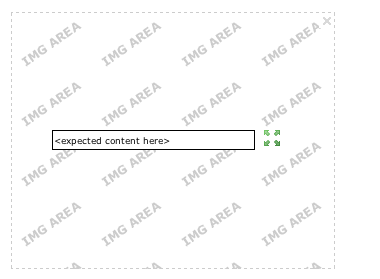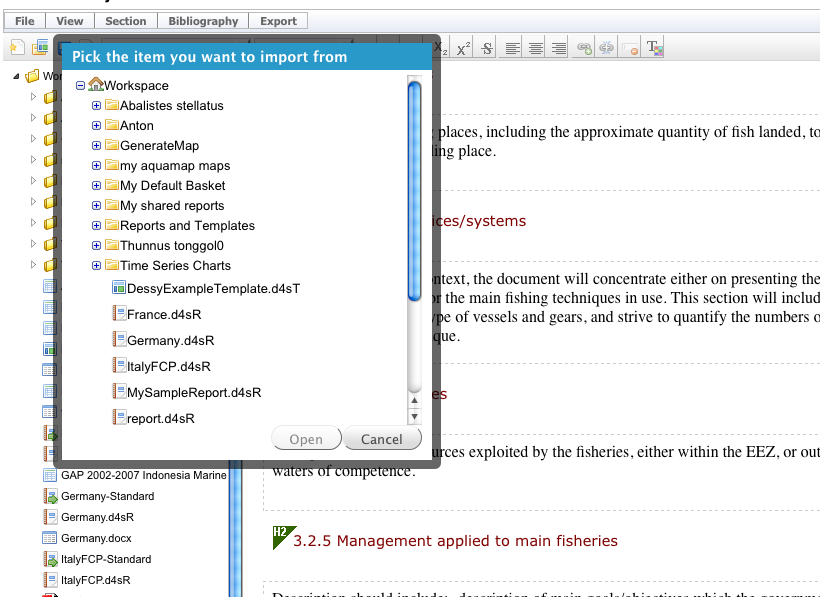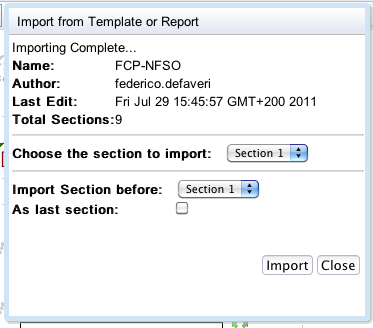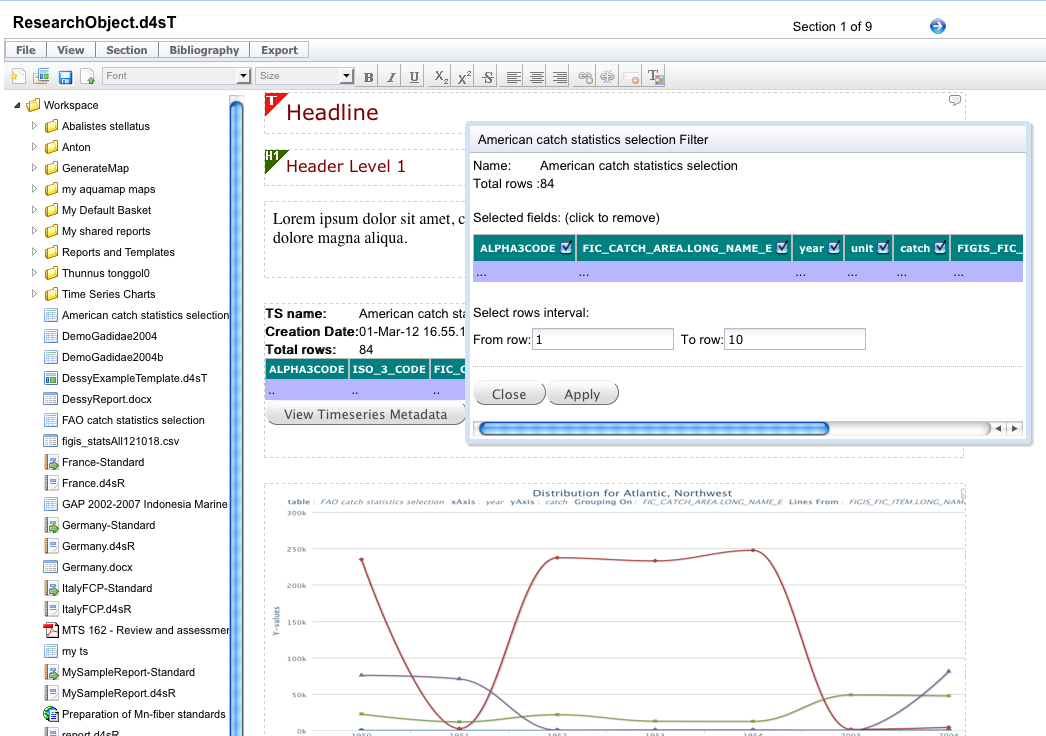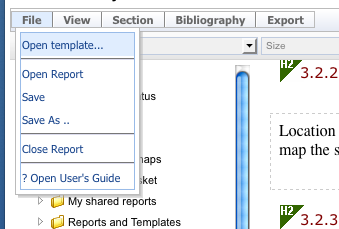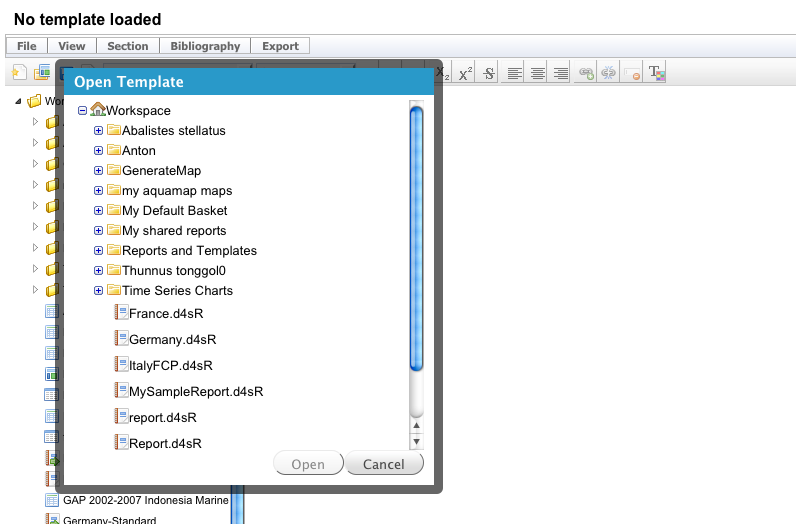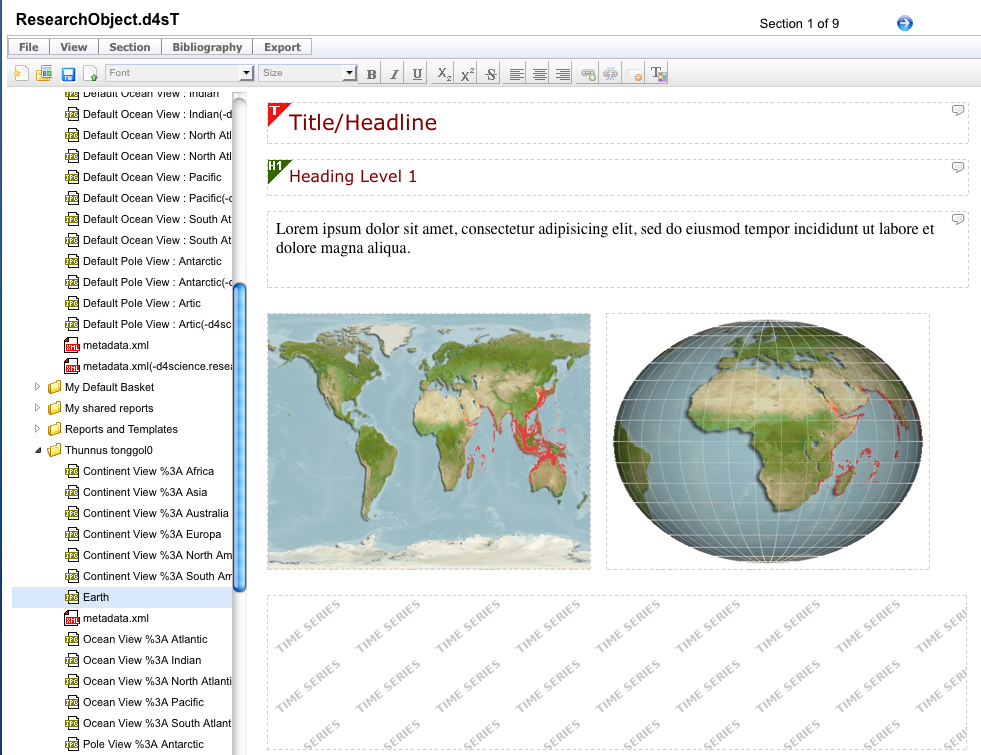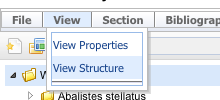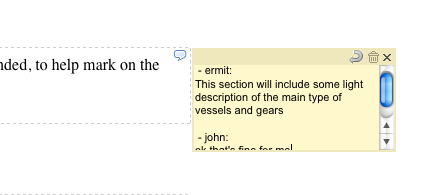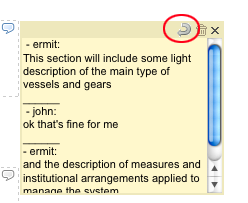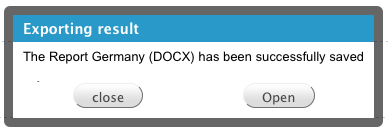Report Management
gCube Reporting allows users to create Report Templates and generate different manifestation of it (OpenXML (.docx), HTML) based on retrieved results. gCube template definition is made up of two phases:
- 1st Phase:
- You can use the Template Creator Portlet to create a gCube template, which is partially filled out by static information i.e. static images, static text and so on) and by dynamic ones (i.e. dropping image areas). The Template Creator Portlet produces a gCube Template that can be loaded into the Report Portlet.
The aim of creating gCube Templates is the one of creating a basic document structure that can be used successively by actually filling the dynamic parts of the template.
- 2nd Phase
- The Report Portlet is the one that generates one or more instances of templates (built in the 1st phase) allowing the end user to add dynamic content. The instance can be successively exported into the final Report as OpenXML (WORD 2007 DOCX), HTML.
The difference between a template and a report is as follows:
- a template is a way to characterize a class of reports, i.e. identify its structure and its potential constituents;
- a report is obtained by instancing a specific template, i.e. identify the actual pieces of a report.
You can access Reporting by clicking on the tab "Reporting" once a VRE is loaded.
Templates
The potential constituents of a template (the ones currently supported) are:
- structured and styled text area, you can define different text areas which then go to compose the template structure:
- Title
- Headings (Level 1, 2, 3)
- Simple Text (Body)
- Images
- Sections
- Table
- Attributes
- Comments
- Instructions
- Table of Contents (TOC)
- Page Breaks
In the Image below you can see a Structured Template Sample
To Insert a template constituent the either Toolbox or Insert option in the Menu Bar can to be used.
It is possible to use the single column layout or a double column layout for placing template constituents in the template.
When inserted a structured and styled text area it is possible to use the rich text toolbar situated the top for applying basic text formatting.
Template constituents (e.g. text, image) are added using top to bottom order if not specified by the user.
To define a new insertion point for a new Template constituent just click in the space gap between two template constituents, a prompt will appear on the left of the section, then you can either go to Insert menu, or click enter to choose the constituent you want to add.
Each Template constituent is equipped with a x icon in its top-right corner. It allows the user to remove it form the section. Each Text constituent is resizable as you type and is also equipped with a lock icon. If clicked the lock get locked. This will make this area not editable once the template is open in the report portlet.
When inserting an Image area it is possible to specify in the texbox situated in the center a text hint for in it which could act as a suggestion when the template is loaded in the report portlet fot he user which had to fill the report. You can also
- resize the image area by clicking on the four arrows icon placed in the center of the image area.
- It is possible to insert new Sections by clicking on the top bar menu Section > Add New or menu Insert > New Section:
A Section is a way to group a set of template components, Sections can be added, discarded and imported. To operate with sections click on the menu item Section
To Import a Section belonging to a different template into the current one, click on the menu Section > Import from template, the user workspace tree is open, pick the template you want to import from as shown in the picture below:
The selected template will be imported, and the Import Template Section Dialog will appear as shown below:
Choose which section import and in where to import in the current template, then click on the import button, the newly added section will be shown on the screen.
- The file menu allows to Save the template, Rename them (Save As), or open a previously saved template.
Reports
Reports is used to generate one or more instances of templates (built with Templates) allowing the end user to add dynamic content. The instance can be successively exported into the final Report as OpenXML (Word docx) or HTML.
On the left of the portlet the user have a Tree which is the same of the Workspace Portlet Tree.
In the picture below you can see a filled report sample:
- The Report portlet can either open template instances (generated by Templates) or previously saved reports.
- The List of your templates or reports can be accessed by clicking the menu File.
Note that template and report instances are saved in you workspace area.
Once the template is loaded the user can drag images into the dynamic image spot from within the workspace tree on your left.
You can also see the structure and navigate through it by using the Report Structure View (View > View Structure) as shown in the picture below.
The View Structure panel is open and can be positioned anywhere in the page.
It is possible to comment on any textarea by clicking on the callout on the top-right corner as shown in the picture below. To delete the comments click on the thrash image, to save close the comment clicking on the X of its yellow frame.
To add other comments on an existing one click on the arrow as shown in the picture below:
It is possible to generate a OpenXML, HTML formats of the current report by using the Options Menu as shown in the figure below.
Note that the exporting format process can take up to 5 seconds, once the process has been completed a popup is shown confirming the success of the operation. Please note that the exported format is always saved in your workspace root folder. From there you are free to move it or download it anywhere else.
Importing template or report sections works the same way explained in the template part. Report can be saved.


